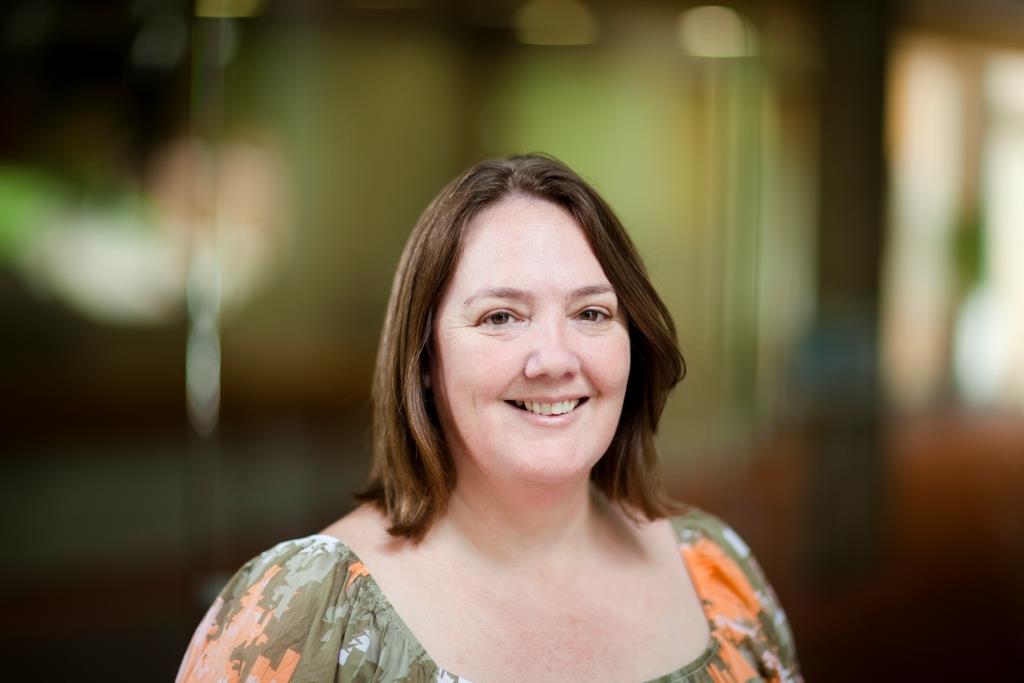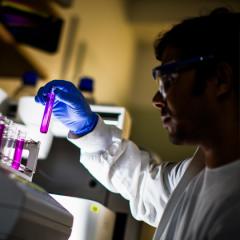
Researchers at The University of Queensland are part of a global team that has identified a new type of artificial stem cell.
UQ Associate Professor Christine Wells said Project Grandiose had revealed it could track new ways to reprogram a normal adult cell, such as skin cells, into cells similar to those found in an early embryo.
The development is expected to help researchers explore ways to arrive at new cell types in the laboratory, with important implications for regenerative medicine and stem cell science.
Associate Professor Wells, who leads the Stemformatics stem cell research support unit at UQ’s Australian Institute for Bioengineering and Nanotechnology, said the project involved a consortium of 50 researchers from Canada, Australia, Korea, the USA and the Netherlands.
“We all come from just one cell – the fertilised egg – and this cell contains within its DNA a series of instruction manuals to make all of the many different types of cells that make up our body,” AIBN Associate Professor Wells said.
“These very early stage cells can now be made in the lab by reversing this process of development.
“Our research reveals the new instructions imposed on a cell when this developmental process is reversed.”
Project Grandiose is a large-scale research effort to understand what happens inside a cell as it reverts to an artificial stem cell.
“The role of the stemformatics.org group was to help the researchers have access to the vast information and data they generated from the project,” Associate Professor Wells said.
“Our online data platform is designed to let non-specialists view the genes involved and the many ways they are regulated during cell formation.
“The platform is used by the Project Grandiose team as an online encyclopaedia to look up the behaviour of individual genes or groups of genes they are interested in.
“One of the most exciting findings from Project Grandiose is the discovery that adult cells can be reprogrammed to more than one type of ‘artificial’ stem cell.
“This opens up the possibility of exploring different ways to arrive at new cell types in the laboratory with important implications for regenerative medicine and stem cell science.”
The project was led by Dr Andras Nagy at the Lunenfeld Tanenbaum Research Institute in Toronto, Canada.
"Stemfomatics has been pivotal in elevating the Project Grandiose dataset to a whole new level,” Dr Nagy said.
“The user-friendly web-based interface allows for direct insights into the molecular events underlying the reprogramming process to pluripotent stem cells.”
Project Grandiose involved around about 50 experts in stem cell biology and genomics technologies from leading laboratories, including scientists at UQ, The University of Sydney, Australian National University, the Victor Chang Cardiac Research Institute and the QIMR Berghofer Medical Research Institute.
Professor Sean Grimmond’s team at UQ’s Institute for Molecular Bioscience and Dr Nicole Cloonan’s team at the QIMR Berghofer Medical Research Institute generated most of the project’s core data and performed the gene expression analysis used in this study.
“Project Grandiose has been an excellent example of how biological research now uses ‘big data’ approaches to better understand important biological processes like cell reprograming,” Professor Grimmond said.
Stemformatics is a collaboration between the stem cell and bioinformatics community and a core technology in the Stem Cells Australia initiative funded by the Australian Research Council.
View Project Grandiose on Stemformatics.org here.
Findings from the research have been published in the journals Nature and Nature Communications:
• Hussein, S. M. I., Puri, M. C., Tonge, P. D. et al. Genome-wide characterization of the routes to pluripotency. Nature.
• Tonge, P. D. et al. Divergent reprogramming routes lead to alternative stem-cell states. Nature.
• Clancy, J. L. et al. Small RNA changes en route to distinct cellular states of induced pluripotency. Nature Communications.
• Lee, D-S. et al. An epigenomic roadmap to induced pluripotency reveals DNA methylation as a reprogramming modulator. Nature Communications.
• Benevento, M. et al. Proteome adaptation in cell reprogramming proceeds via distinct transcriptional networks. Nature Communications.


